HOW TO BURN BUTTER.
Burnt butter or brown butter is on all the menus at the moment. Here’s why - and how to turn it into a beautiful batch of biscuits.
It’s a one-ingredient recipe – butter. And one method - burn it.
To make brown butter, you simply melt butter until it turns brown - a particular tawny, shetland pony sort of brown that the French call noisette, after their beloved hazelnuts (hence beurre noisette).
But that doesn’t do justice to the toasty, nutty flavour you get as the water evaporates and the milk solids in the butter tan, or the almost toffee-like aroma that fills the kitchen.
Chefs adore using burnt butter, which is why it’s on every second menu at the moment. Agnolotti and ravioli bathe in it, mayonnaise is made with it, and dessert chefs turn out spectacular brown butter ice-creams and custards.
It’s their special little secret, introducing a nuttier, more developed complexity of flavour into the batters and doughs for their crepes and pancakes, madeleines and financiers.
Here’s how to make brown butter. And read on for the best thing to do with it - a big batch of crunchy, buttery, burnt butter biscuits.
BURNT BUTTER, THE RECIPE.
125 g good butter, chilled
Cut butter into squares and place in a frypan.
Melt over medium heat, stirring enough to stop it catching and burning.
Listen to the spluttering – that’s the water evaporating – and ease off the heat a little as it gets increasingly foamy.
Keep peeking underneath the foam to check the level of browning at the bottom – you want it tawny brunette, not Morticia black.
Pour it IMMEDIATELY into a bowl to stop it heating further.
Let it cool, and the solids will settle at the base.
If it’s as ugly as all get-out, a sort of dirty brown speckly bleergh, then congratulations. It’s perfect. Those speckly brown bits are the milk solids that have gone all toasty – and that’s where all the flavour and complexity is, so don’t strain them out even though you’re dying to.
Now, here’s what to do with it.
My mother Rosemary used to make burnt butter biscuits from Mrs State’s Australian Cook Book that her mother gave her as a young newly-wed. “It was quite modern, all about eating healthily and being active,” says Mum. “It really broke new ground for the 1950’s.”
Burnt butter biscuits
125 g butter, cubed
110 g caster sugar
1 egg, beaten
1 tsp vanilla extract
160 g self-raising flour
Pinch of sea salt
20 blanched almonds
Makes 18-20
Heat the oven to 170C and line two baking trays with baking paper.
Melt the butter over medium heat in a small pan, until it turns a nutty medium brown, without burning.
Pour immediately into a mixing bowl to cool for 15 to 20 minutes.
Beat in the sugar, until smooth.
Beat in the egg and vanilla, and it will thicken to a caramel.
Fold in the flour and sea salt until you have a smooth dough.
Take a good teaspoonful and roll into a small ball the size of a walnut. (If too soft, chill for 10 minutes first).
Place on a baking tray lined with baking paper, allowing room for spreading, eg nine per tray.
Top each ball with an almond, pressing down lightly.
Bake for 16 to 18 minutes, until golden but still a touch soft.
Leave on the baking tray for 3 mins, then transfer to a wire rack to cool.
Store in an airtight container.
Tips:
If the dough is too soft for you to roll into a ball, put it in the freezer for 5 minutes and it will firm up beautifully. This trick also helps the biscuits keep their shape in the oven.
If you’re particularly compulsive or perfectionist and you want all your biscuits the same size, pinch off each piece of dough and weight it before you roll it into a ball. The ones shown here were 16 grams each.
Mrs State said to cut the blanched almonds in half. Have you tried cutting a blanched almond in half? I left mine whole.
Walnuts and macadamias, also good. Or top with a hazelnut for a little in-joke on beurre noisette, hazelnut butter. At least you’ll be amused, if nobody else.
Take them out of the oven when they’re still a little soft, and leave them on the hot baking tray for a few minutes before transferring to a wire rack to cool.
If you want thinner, crisper biscuits, cook at 180C which will cause the dough to soften faster and spread further. Just start checking them at 14 to 16 minutes.
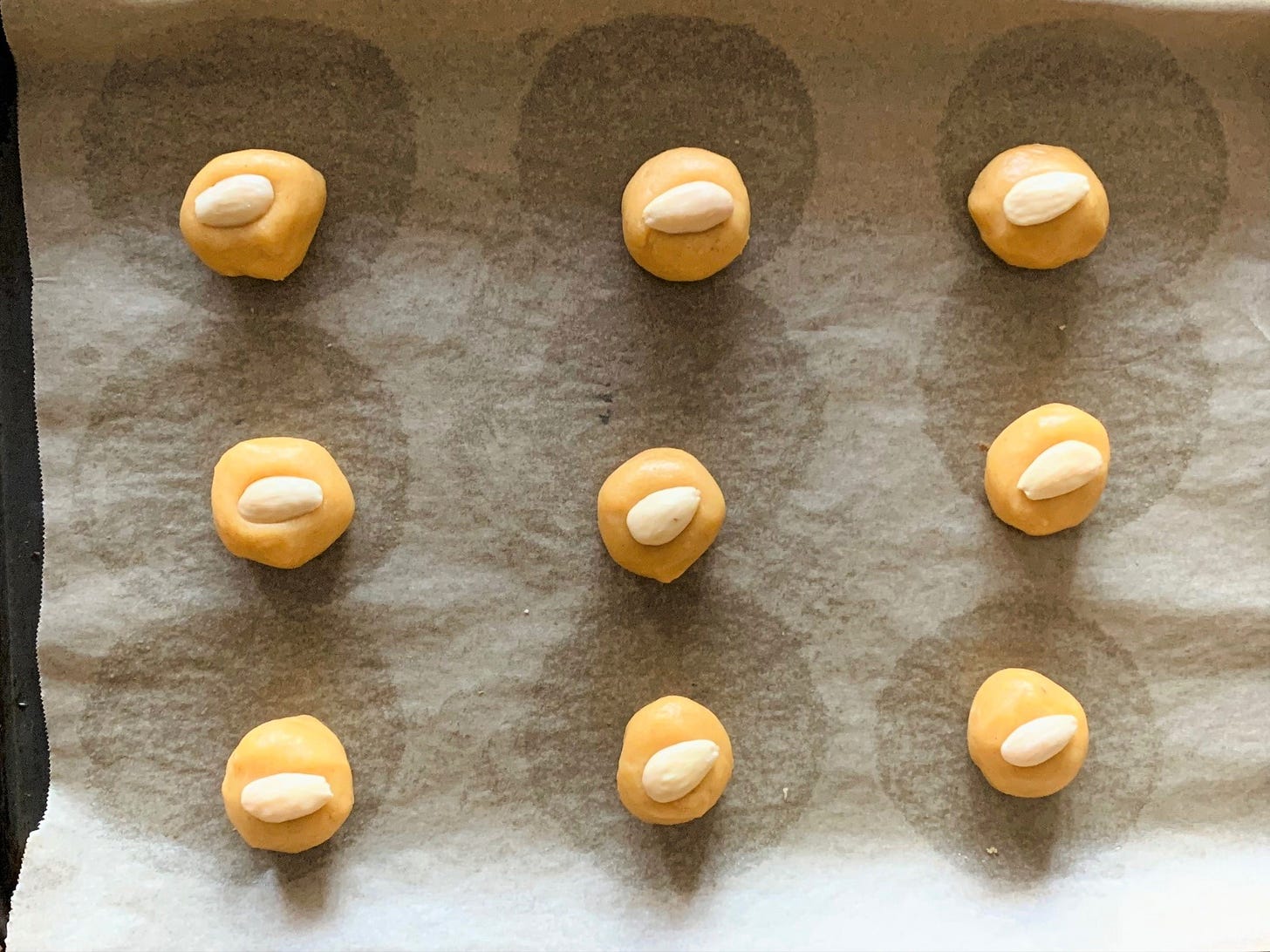
Thanks for reading! Feel free to subscribe for more Jill Dupleix Eats in your inbox every Thursday. And special thanks to my right-hand man, Terry Durack, for INSISTING that I stick with tradition and do blanched almonds on the biscuits when I really wanted to go free-range and use macadamias, walnuts, and skin-on almonds. I even dug the hazelnuts out of my granola to put on a few. But, boringly, the blanched almonds were the best.
I would also like to acknowledge the traditional owners of the lands and waters upon which I work, live, cook and play; the Gadigal people of the Eora Nation. I fully support the Uluru Statement from the Heart, and for an Aboriginal and Torres Strait Islander voice to be enshrined in Australia’s Constitution. It’s about time, folks.

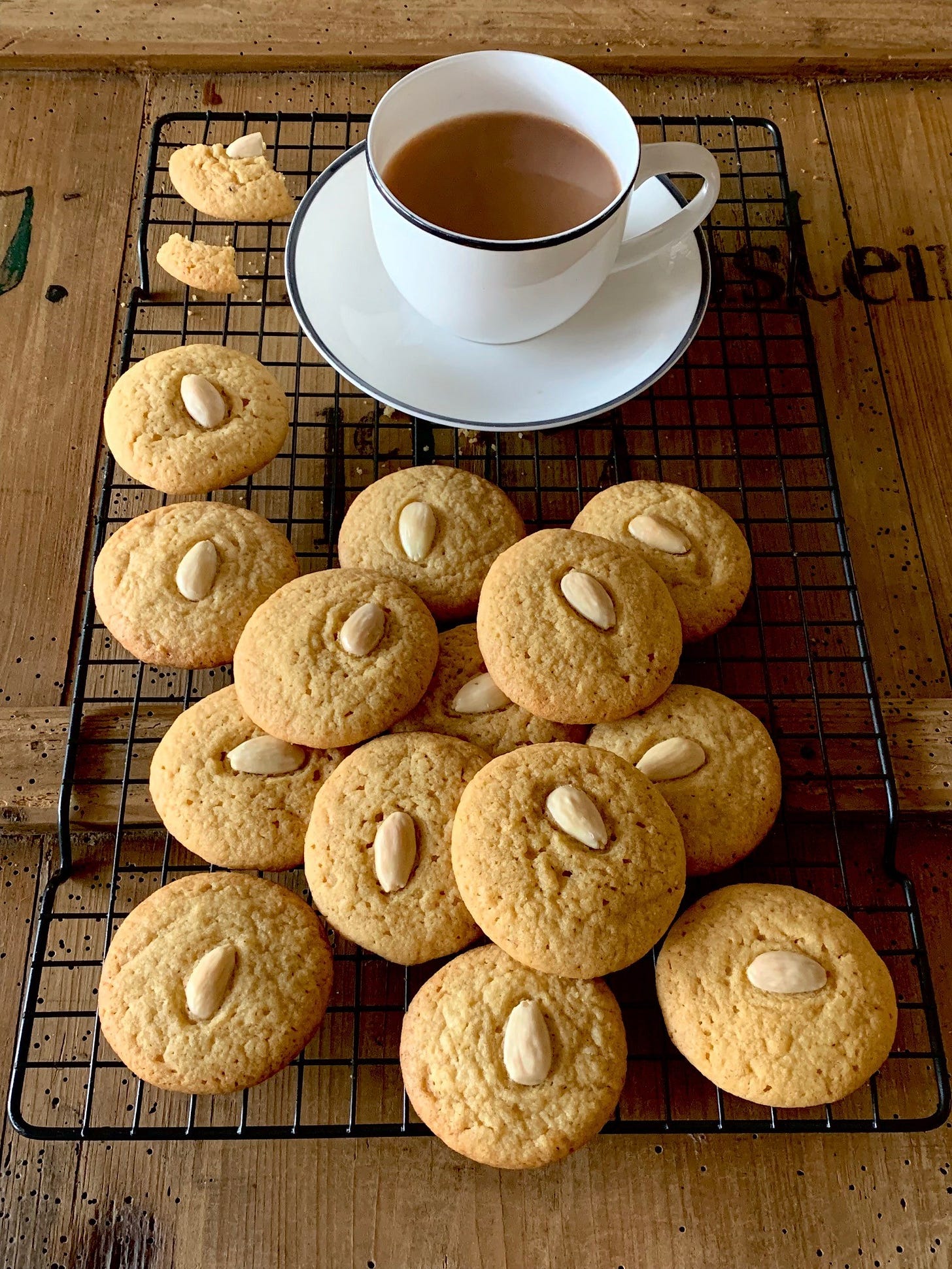
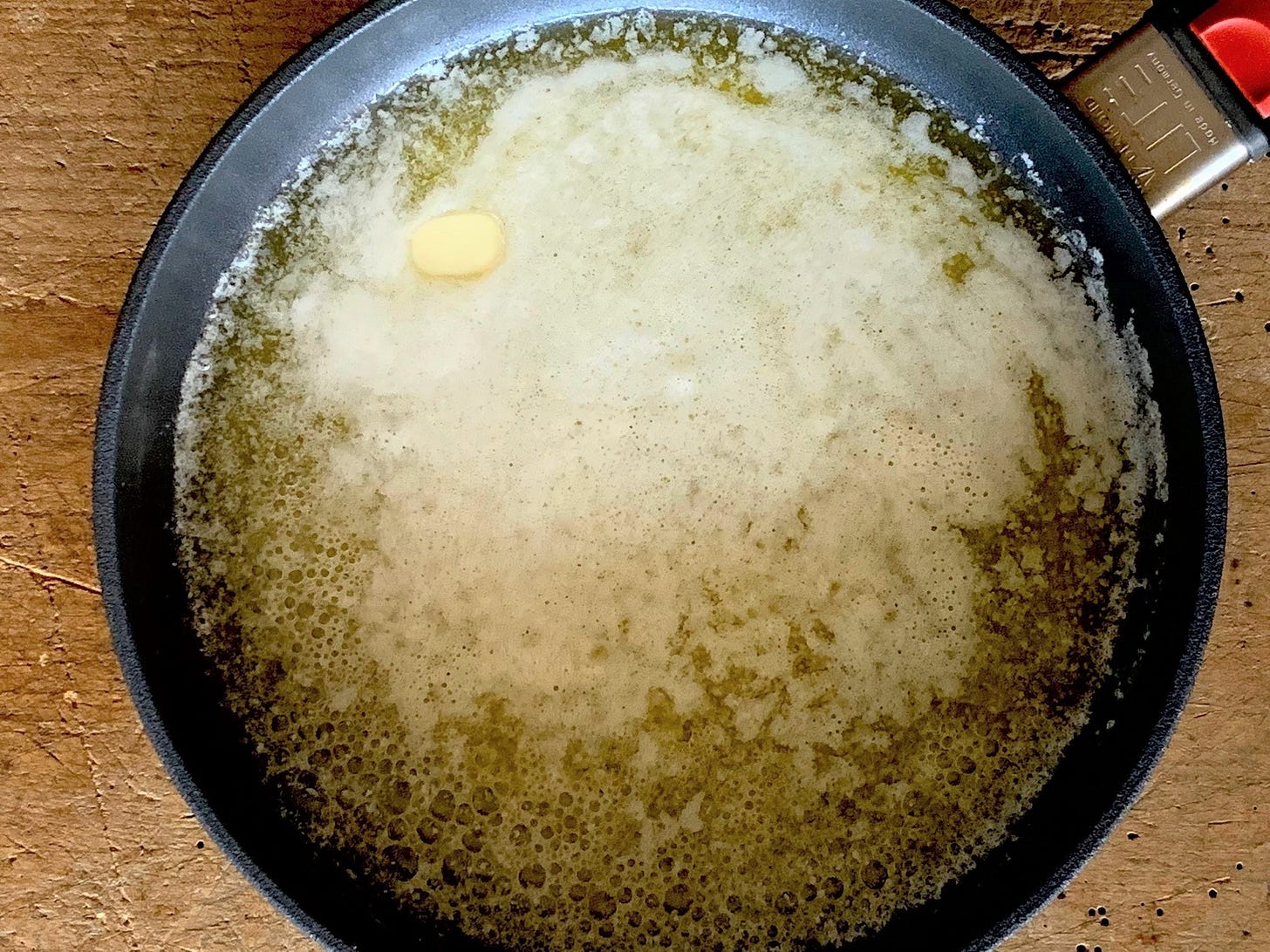
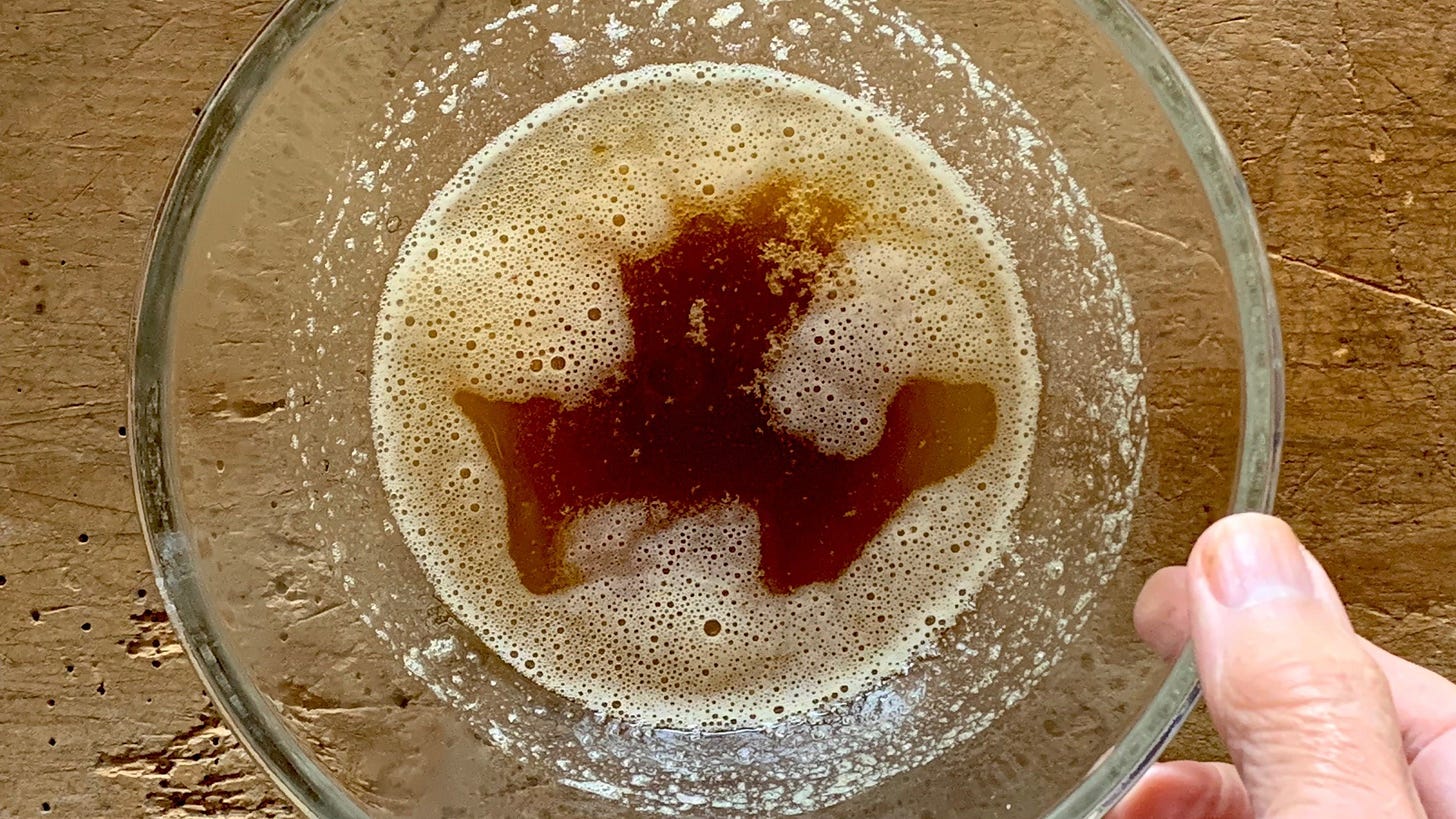
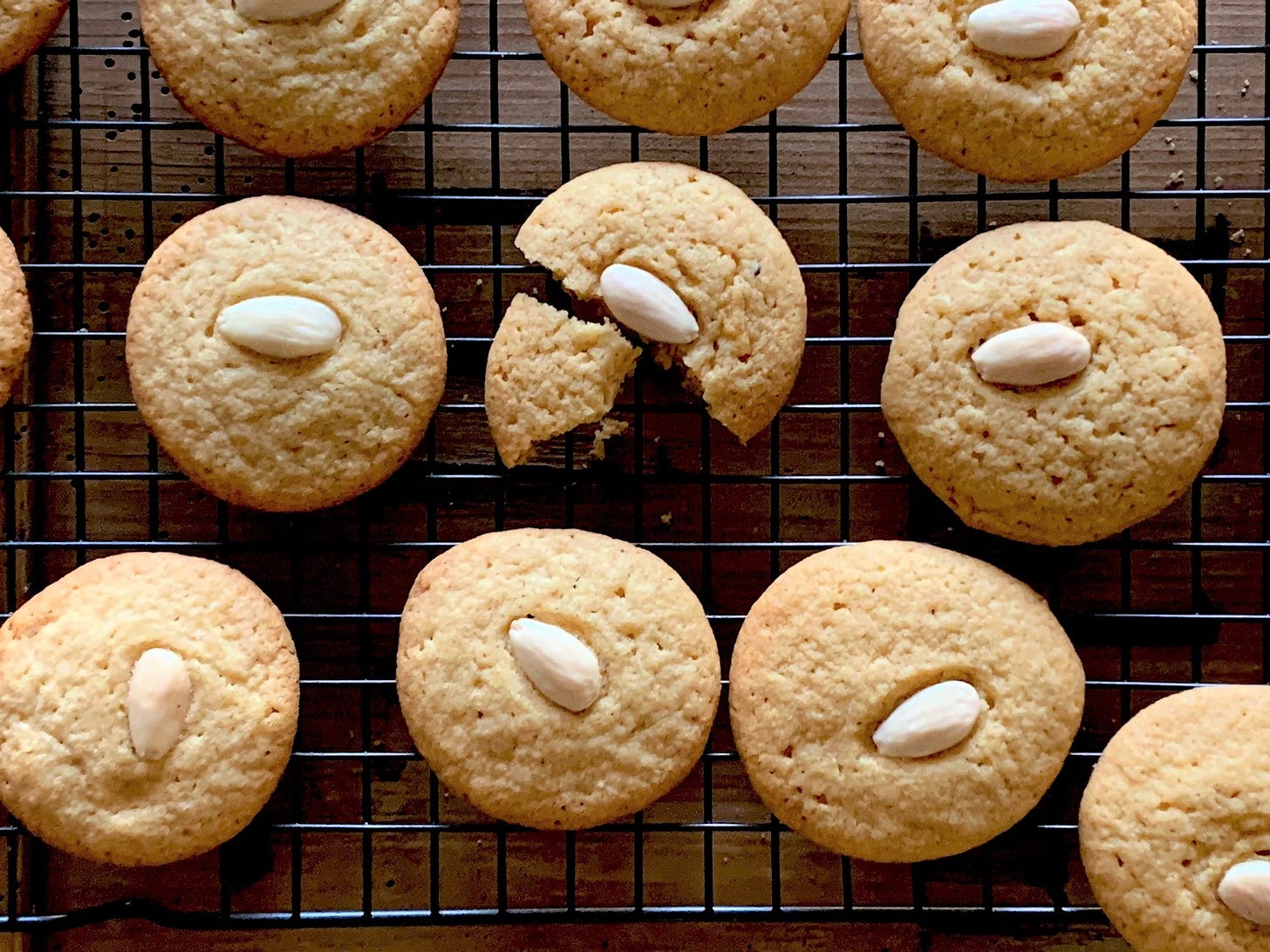
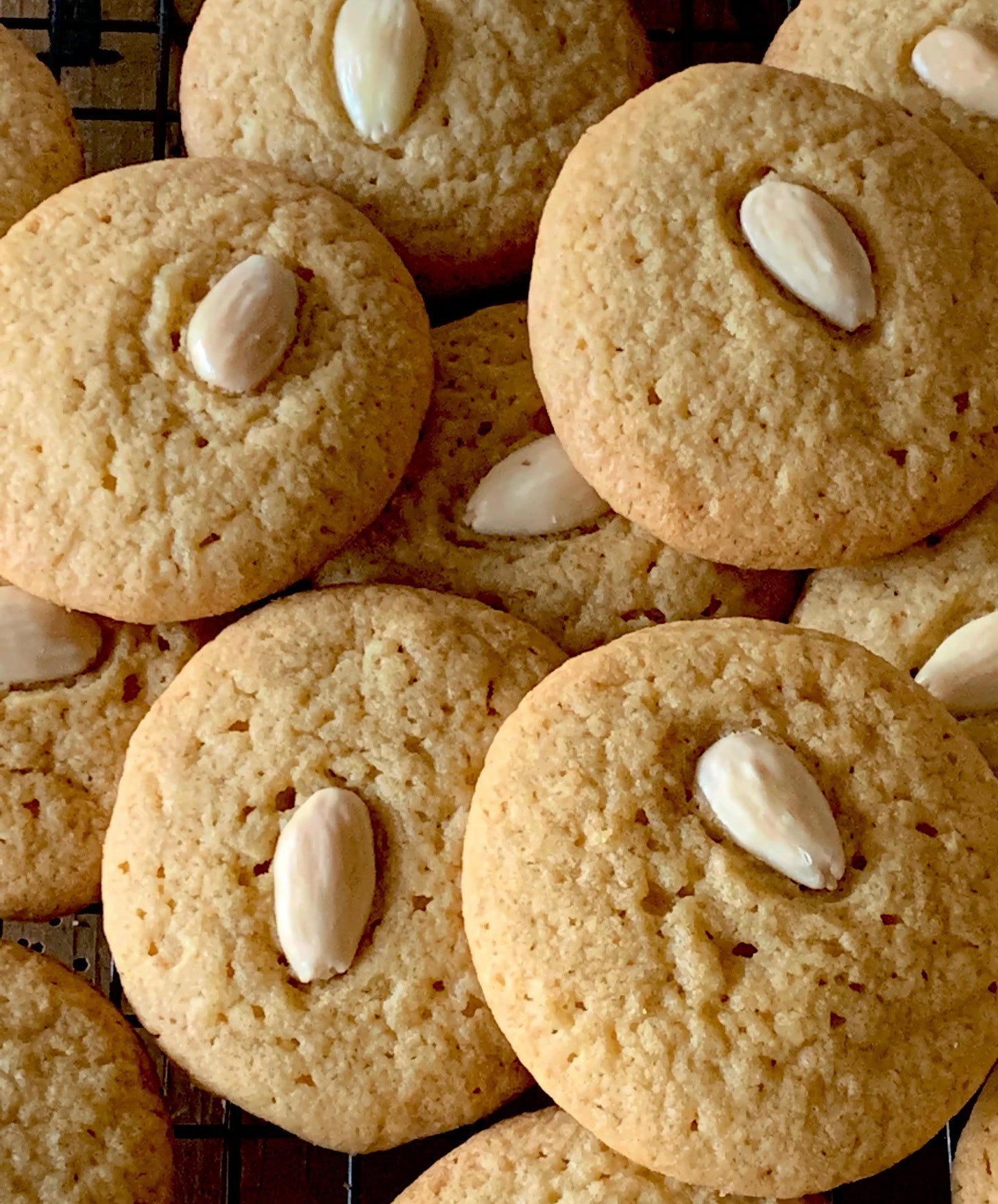
Morticia black hahaha
They’re really good.